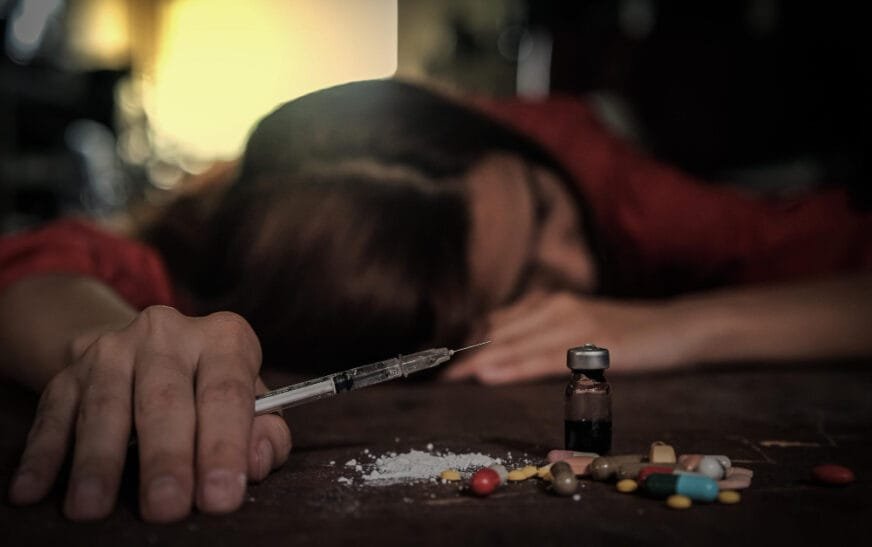In the blink of an eye, a generation that once dreamt of a future filled with opportunities, love, and growth is increasingly succumbing to the grip of a powerful and dangerous enemy: drugs. Presently, the world that surrounds all of us is rather different, and the tasks that present generations have to solve are rather different too.
Thanks to social networks and peer pressure in the age of digitalization, a new door has been opened for substances that offer temporary escape but lead to ruination. These drugs not only target youth’s physical well-being but also their mental and emotional, damaging them beyond repair—seeming like there is no way back.
In this blog, we will find out why this is the case currently and how we can prevent today’s generation from being captivated by this substance.
Factors Affecting Drug Use Among Youths
1. Peer Pressure and Social Acceptance:
Over and over, it has been evident that one of the main reasons teenagers indulge in drug use is pressure from their peers. This leads to putting themselves in extremely misleading actions and decisions, for the desire to be accepted by friends is something they have clearly defined.
Substance abuse has become a part and parcel of cultures across many societies where people take drugs to fit in a certain category, to be cool, or to be accepted.
Over 35 million people worldwide suffer from drug use disorders, with many starting in their teenage years.
2. Stress and Mental Health Challenges:
It disappoints the expectations academically and socially, or in any other area one has to perform; the pressure can be overwhelming for a young person. These pressures often present children in the form of anxiety, depression, and inadequacy.
These effects translate to emotional issues that many teenagers cannot address healthily, hence resulting in substance use as a way of dealing with reality. The assumption that drugs are going to make these individuals whole at least for a while will prove fatal in the long run.
3. Accessibility and Availability
Drugs have become more accessible than ever before. The youth are making all sorts of efforts to get to the hold of these dangerous substances with ease.
DID YOU KNOW?
Over 11 million people misuse prescription drugs in the U.S. every year, often without realizing the risks.
The Negative Effects Of Drug Abuse Among The Young
Drug taking has very negative effects on the growth of teenagers.
1. Physical Health Decline
Drugs can damage nearly every part of the body, from the brain to the heart, liver, and lungs. Young bodies are especially vulnerable to the negative effects of substance abuse, and prolonged use can lead to irreversible damage.
2. Mental Health Deterioration
Psychoactive substances change the concentration of chemicals in the brain and may result in mental sickness, e.g., anxiety, depression, paranoia, and hallucinations. The youth is more inclined to such changes because they have developing brains that cannot easily handle mental health complications caused by an abusive substance.
3. Social and Emotional Consequences
Drug addiction often leads to strained relationships with family and friends. Trust is broken, and emotional support systems are eroded. Many young individuals find themselves isolated, withdrawing from their loved ones, and facing rejection due to their behavior.
The opioid crisis in the U.S. has led to more deaths than car accidents and gun violence combined in recent years.
Protecting Our Youth: What Can Be Done?
- Open Communication: Making parents, teachers, and youths more willing to talk about drug abuse is perhaps one of the biggest significant interventions that can be made.
- Strengthening Laws and Regulations: Strengthening laws that restrict the availability and distribution of drugs is essential in limiting youth access. Governments must work closely with local communities to enforce strict penalties for those who supply drugs to minors. In addition to preventing access, stricter regulations can also reduce the normalization of drug culture in society.
- Building Resilience Through Life Skills Training: Resilience is a key factor in preventing drug abuse, as it enables teens to bounce back from setbacks without turning to substances. Life skills training programs that teach emotional regulation, problem-solving, conflict resolution and stress management can help young people handle life’s challenges without resorting to drugs.
- Encouraging Healthy Alternatives: Encouraging involvement in sports, music, art, or other extracurricular activities helps youth build self-esteem, discover their passions, and feel a sense of belonging.
- Stronger Family Engagement: Family is one of the most influential factors in a young person’s life. Parents who actively engage with their children’s daily lives, set clear boundaries, and model healthy behaviors have a stronger impact on preventing drug use.
CONCLUSION
Across the globe, the war against drug use amongst today’s youth is still raging; however, it is a war that can certainly be won, if only as a society we will unite to wage this war. When we know why young people try drugs and become addicted, we can begin to think of better solutions that focus on how we can help them and prevent the issue from existing in the first place. Only through collective action—by fostering healthy environments, open communication, and strong support systems—can we hope to protect the future of our youth from the devastating impact of drugs.













